
Cupping Therapy Page Menu: 1 2 3 4 5 Next>>
Cupping Therapy During the Golden Age of Piracy, Page 2
Wet and Dry Cupping Therapies
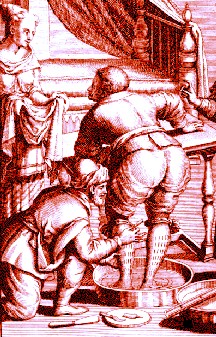
Artist: Prosperi Alpini
Scarifying a Man's Legs with a Lancet
From De Medicinea Aegyptiocum (1719)
"There are two sorts of Cuppings, the one which are call'd dry, because they consist in the bare Apposition [positioning] of the Cupping-Glass, without drawing out any thing that wets the Skin; and the other which we call humid or scarified, because they make Scarifications to draw out the Blood. " (Pierre Dionis, A course of chirurgical operations: demonstrated in the royal garden at Paris. 2nd ed., p. 473)
Cupping therapy gave the surgeon two options. The first was wet cupping which removed errant humors from the body by forcibly drawing the blood using cupping vessels placed over incisions made in the skin.
The second was dry cupping, which moved the peccant humors away from the location where the surgeon felt they were causing problems to another place without removing anything from the body.
Wet Cupping
As Dionis suggests in the above quote, the first thing the surgeon had to do for wet cupping was scarify the part to be cupped. This was done by making a number of small incisions in the skin with a lancet/fleam or, if the surgeon had one, a scarificator - a small, spring-loaded machine that could make several incisions at once. (We will discuss the scarificator in greater detail on a later page.) These incisions by themselves were not usually enough to withdraw the required amount of blood. "In order to remove any
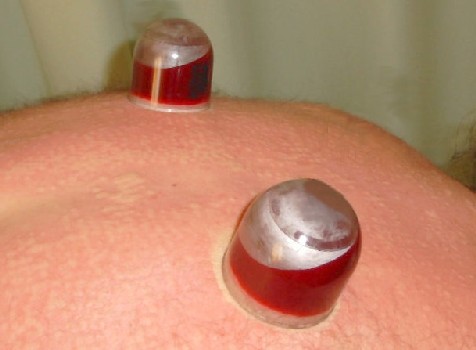
Photo: Wiki User Schorle - Wet Cupping a Person's Back
sizeable amount of blood... it was necessary to apply some sort of suction to the scarifications, because capillaries, unlike arteries and veins, do not bleed freely."1 So cupping glasses were used to forcefully draw blood out via the incisions.
Naval medicine historian John Kirkup explains, "Efficient aspiration [drawing of the blood through the incised skin] depended upon the vacuum obtained, correct placement of the cup, and commencement of suction before the scarified wounds coagulated."2 This gave the surgeon a little more control over the process of removing blood than opening a vein. He could place cupping glasses anywhere on the body where they could effectively seal around the skin. Kirkup notes that wet cupping pre-dates other bloodletting methods and "was known to most ancient cultures"3.
1 Audrey Davis and Toby Appel, Bloodletting Instruments in the National Museum of History and Technology, p. 17; 2,3John Kirkup, The Evolution of Surgical Instruments; An Illustrated History from Ancient Time to the Twentieth Century, p. 406
Dry Cupping
Dry cupping involved placing the evacuated cupping glass on the skin without out making any incisions. When this is done, the skin swells and is actually drawn into the cup as the vacuum forms against the skin.
Photo: Wiki User Biedronki
Dry Cupping a Person's Back
While the purpose of wet cupping was obvious - the removal of the blood humor - the purpose of dry cupping was not. Most golden age of piracy era surgeons seem to agree that the movement of humors was effective, but they shy away from explaining why this was so.
First century Roman Aulus Cornelius Celsus suggested that dry cupping removed air from the body. This is an unusual assertion, given that air was not considered a bodily humor. However, he explained that "when the offence is... only a flatulency [gas]", dry cupping would effectively remove the offending air.1
Three types of dry cupping are described. The first appears in Audrey Davis and Toby Appel's book on bloodletting. They explain that, "the source of pain was presumed to be somewhere below the skin, and the pain was relieved by bringing blood away from the affected part to the surface of the body."2 The second two types of dry cupping involved moving humors from one location in the body to another. They are referred to in the period literature as derivation and revulsion.3 Let's look at them in greater detail.1 Cornelius Celsus, Of Medicine in Eight Books, p. 64; 2 Audrey Davis and Toby Appel, Bloodletting Instruments in the National Museum of History and Technology, p. 31; 3 Peter Brain, Galen on Bloodletting, p. 13;
Dry Cupping Therapies - Humor Movement Via Derivation and Revulsion
In his explanation of humoral theory, Hippocrates mentioned two issues that can occur due
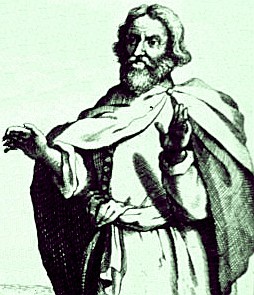
Galen of Pergamon
to a breakdown and over-concentration of humors: an excess of 'bad' humors in one place and an absence of 'good' humors in another. Second century Greek physician Galen of Pergamon built upon Hippocrates' concept by defining two ways the humors could be encouraged to leave the location where they were causing trouble and go to a location where they were needed: derivation and revulsion.
Derivation involves moving the errant humors a short distance away from the problem site. Peter Brain gives a simple example of how this short distance movement could work. "If bleeding from the mouth is brought to an end by a haemorrhage from the nose, this is derivation, since the flow is diverted to a nearby part"1.
Revulsion also involves diverting humors away from a body part, but here they are drawn to a more distant part of the body than in derivation. Military surgeon Richard Wiseman explains that revulsion "is always made in the remote Parts, and according to the rectitude [correct behavior] of the Vessels"2.
Wiseman elsewhere explains that such methods "raise a Tumour in the contrary part, and give Nature occasion of discharging the Matter in a place far distant, which otherwise would have lodged here: in doing of which she often sucketh in the Humour again which she had before separated into the former place."3
,1 Peter Brain, Galen on Bloodletting, p. 129; 2 Richard Wiseman, Eight Chirurgicall Treatises, 3rd Edition, p. 165; 3 Wiseman, p. 6
Illnesses Treated By Cupping Therapy
The variety of illnesses and diseases for which golden age of piracy authors suggested cupping therapy was extensive.

Cupping for Sciatica, From
Exercitationes Practicae Circa
Medendi
Methodum, by Frederick
Dekkers (1694)
Naval medicine historian John Kirkup explains, "Cups were applied as a general boost to health or for more specific conditions, such as lung affections, or to an anatomical site of pain, such as the buttocks when treating sciatica."1 Many authors had a number of ideas about where cupping therapy could be effectively used in treatment.
While cupping therapy was embraced by the majority of period surgical authors, a few felt the use of cupping therapy in treating various illnesses was on the wane. Surgical teacher Pierre Dionis opined,
As the World has acquired more perfect Knowledge in Anatomy, the use of Cupping Glasses has become proportionably less frequent: They have been suppressed in all the Diseases in which they have been discovered to be of no Efficacy: And we have retained the use of them in those where they afford (or we can expect from them) the least Relief, as in the Apoplexy, Lethargy, and all Defluxions of the Head which attack the Eyes and Face.2
One period author had no use whatsoever for cupping in treatment: René-Jacques Croissant de Garengeot.
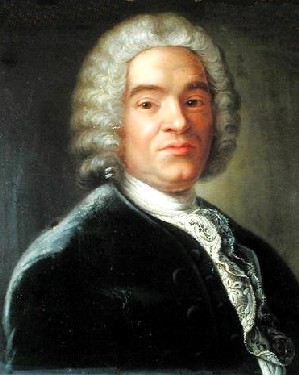
René-Jacques Croissant de Garengeot
He criticized the practice of cupping in the 1727 French edition of his book Traité des operations de chirurgie. Curiously, this commentary does not appear in the English translation of the work. (Note that this means that the following information is based on my ability to re-interpret the Old French, so, to borrow from yet another language, caveat emptor.)
Monsieur de Garengeot explains that surgeons who use cupping therapy rely on "specious cures they read in their books [such as those by Galen, Hippocrates and other revered Ancient authors] without considering what good can reasonably be expected from these remedies, they can kill a patient with their pompous scarifying, cupping, blister plasters, & setons made with cauteries."3 He protests, "I have never seen obstinate ophthalmia, large inflammations, apoplexy [unconsciousness], malignant fevers , &c. cured by such remedies: on the contrary I observed a number of times, being under the discipline of my late father, that persons to whom I applied such remedies to treat trifling maladies of the eyes, &c. became much worse."4
Still, most golden age of piracy era surgical authors recommended cupping be used in some operations and a few recommended them in several.
Illnesses Treated By Cupping Therapy - Those Recommended by a Single Author
Many of the illnesses where cupping could be used were only mentioned by one of the authors under study or in passing as one of several cures by two period authors. This provides very limited proof for the use of cupping glasses in these particular ailments, but since it is suggested as part of the remedy, they merit mention here. Included among these illnesses: angina [chest pain caused by insufficient blood flow to the heart]5, colic [pain in the abdomen]6, apostemes [swollen abscesses]7, Dysentery8, erysipelas [acute skin infection]9, hemorrhoids10, hydroceles (or dropsy - an accumulation of fluid under the skin)11, lethargy12, phlegemon (inflammation)13, phrenitis (probably delirium)14, rheumatism15, scirrhus (a cancerous growth)16, swelling in the throat17, toothaches18, ulcers19 and wasting limbs20.
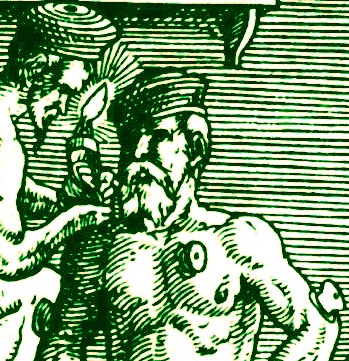
Paracelsus Opus Chyrurgicum Artzney Buch, p. 228 (1571)
In most of the above ailments, cupping therapy was just one of several methods of humoral diversion mentioned. However, in two of the illnesses, cupping is the primary treatment given by a particular author, who provides us with a fuller description of how cupping was to be used.
When treating wasting (weakening) limbs, German military surgeon Matthias Gottfried Purmann explains that one surgeon he knew had "done great Cures in this Nature by application of Cupping Glasses without Scarification, and after he had employed eight or nine of them for a considerable time"21. Purmann explains that an important part of this treatment was to wash the site with a complex herbal medicine which was composed of sarsaparilla roots, guaiacum, rosemary, lavender flowers and other herbs in spirit of wine, continuing this treatment until the patient's limbs regained their tone.
Sea surgeon John Moyle's treatment for rheumatism also relied heavily on cupping. First he sweated the patient (another way to purge bad humors and one often associated with cupping therapy) and then vigorously rubbed the parts to be treated. Then he cupped the patient, advising the surgeon that a "good quantity of blood be drawn by Cupping, and do not this only once, but twice; or thrice if occasion be, for this hath been known to Cure many."22 Moyle explains that removing blood through wet cupping "where the Disease lies, is more effectual than taking out of the Veins by Phlebotomy."23
1 John Kirkup, The Evolution of Surgical Instruments; An Illustrated History from Ancient Time to the Twentieth Century, p. 399; 2 Pierre Dionis, A course of chirurgical operations: demonstrated in the royal garden at Paris. 2nd ed., p. 472; 3,4 René-Jacques Croissant de Garengeot, Traité des operations de chirurgie, p.402; 5 Ambroise Paré, The Workes of that Famous Chirurgion Ambrose Parey, p.233; 6 John Woodall, the surgions mate, p. 150; 7 Paré, p.211; 8 Woodall, p. 221; 9 Richard Wiseman, Eight Chirurgicall Treatises, 3rd Edition, p. 36 & 40; 10 Wiseman, p. 212; 11 Wiseman, p. 128; 12 Woodall, p. 33 & Dionis, p. 474; 13 Wiseman, p. 15 & Paré, p.201; 14 Wiseman, p. 297; 15 John Moyle, The Sea Chirurgeon, p. 221; 16 Wiseman, p. 92; 17 Paré, p.230; 18 Paré, p.413; 19 Wiseman, p. 165; 20 Matthias Gottfried Purmann, Churgia Curiosa, p. 198 & Woodall, p. 33; 21 Purmann, ibid.; 22,23 Moyle, p. 221

